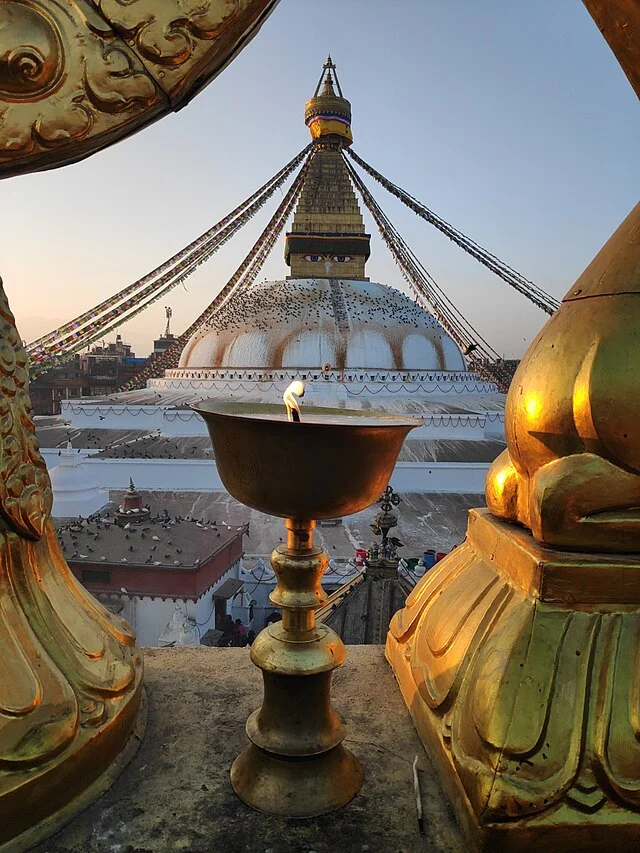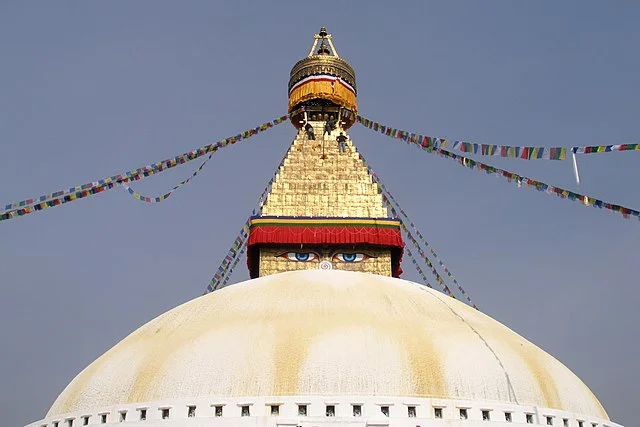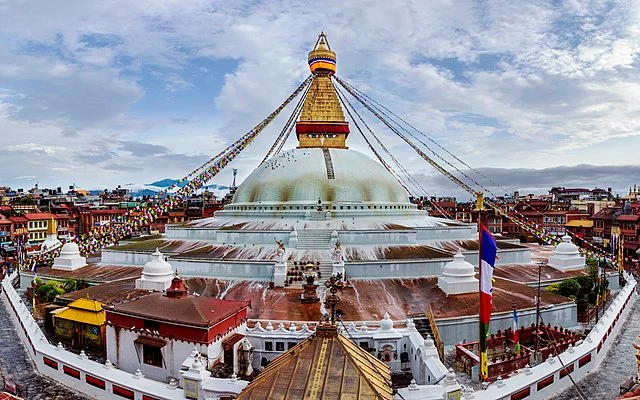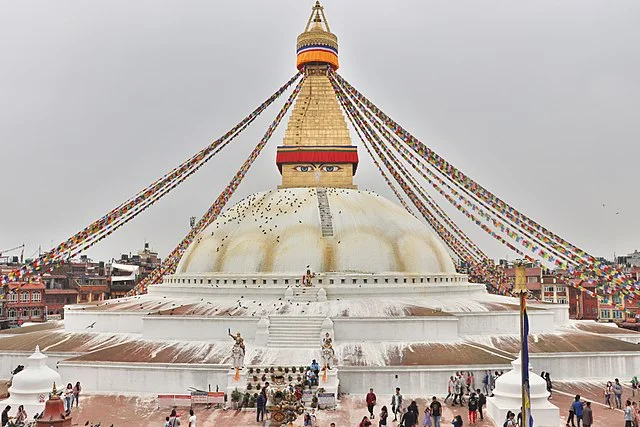Boudhanath Stupa, located in Kathmandu, Nepal, is one of the largest and most significant stupas in the world. It is a UNESCO World Heritage Site, revered for its cultural and spiritual importance.
Get your dose of History via Email
Historical Background

Boudhanath Stupa dates back to the 5th century AD. According to historical records, it was built shortly after the death of the Buddha. The stupa originally served as a pilgrimage site for Buddhists. Over time, it became a center of Tibetan Buddhism in Nepal.
The stupa is believed to house relics of the Buddha, adding to its significance. Its construction reflects the architectural style of the time, blending elements from both Indian and Tibetan influences.
Architectural Features

Boudhanath Stupa has a massive mandala design. It measures 36 meters in height, making it one of the tallest stupas in Nepal. The base is square, symbolizing the Earth, while the dome represents the universe.
The stupa’s eyes, painted on all four sides, symbolize the all-seeing nature of the Buddha. The eyes look in all directions, reminding visitors of the Buddha’s omnipresence. Above the dome sits a tower-like structure known as the “harmika,” which represents the celestial realm.
Cultural Significance

Boudhanath Stupa serves as a major pilgrimage site for Buddhists. Thousands of devotees visit each year, especially during festivals. The stupa is surrounded by monasteries and Tibetan shops, creating a vibrant cultural atmosphere.
The stupa plays a key role in the Tibetan Buddhist community. It attracts practitioners who perform rituals and offer prayers. The surrounding area features traditional Tibetan architecture, enhancing the spiritual ambiance.
Preservation Efforts

Boudhanath Stupa has undergone several restoration efforts. After the 2015 earthquake, significant damage occurred. The local community, along with international organizations, worked to restore the stupa and its surroundings.
These restoration efforts ensure the stupa remains a vital part of Nepal’s cultural heritage. Ongoing maintenance helps preserve its architectural integrity and spiritual significance.
Conclusion
Boudhanath Stupa stands as a symbol of Buddhist faith and cultural resilience. Its historical, architectural, and spiritual dimensions make it an essential site for both local and global communities. Visiting Boudhanath offers a unique opportunity to engage with Buddhist traditions and witness a living heritage.
Source:

